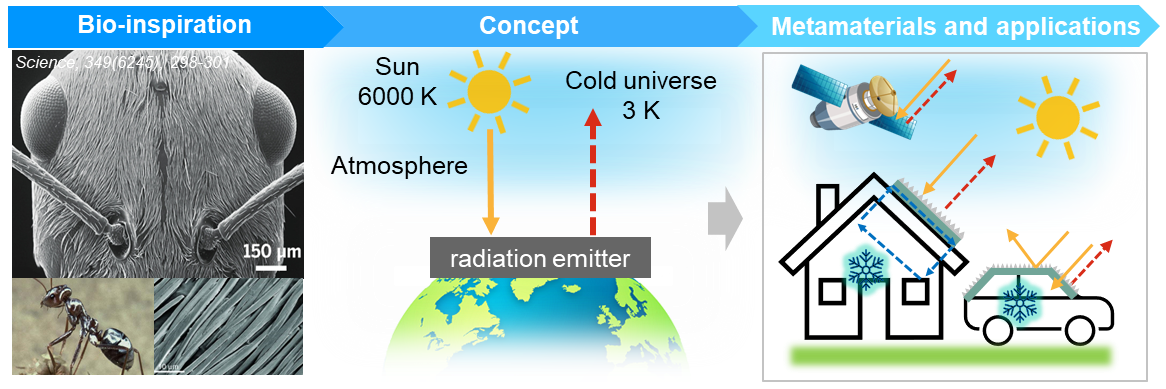Harvesting the coldness of the universe for sustainable cooling under solar radiation
- Type:Master Thesis
- Supervisor:
- Field of Study:
Mechanical engineering and material science
- Links:Nanophotonics for Energy
Description of Work:
Cooling structures like buildings and vehicles has become an essential need in our modern world. Traditional compression-based systems, such as air conditioners, are energy-intensive, rely heavily on electricity, and frequently utilize coolants that harm the ozone or significantly contribute to the greenhouse effect. In the summer of 2023, Europe witnessed temperatures exceeding 40 °C, amplifying the cooling demand and, consequently, energy consumption and emissions. With projections indicating that the energy requirement for cooling will triple by 2050, there's an urgent call for the advancement and adoption of renewable and sustainable cooling solutions to meet this rising demand and mitigate the environmental impact.
Sahara silver ants thrive in the Saharan sands, among the planet's most intense and arid conditions where most insects perish almost instantly upon exposure. Their unique silver hair, as depicted in the picture, possesses photonic structures that adeptly harness the deep cold of the universe through mid-infrared radiation, known as radiative cooling. Remarkably, this adaptation allows the ants' body temperature to remain below the surrounding ambient temperature.

Drawing inspiration from the radiative cooling mechanism of Sahara silver ants, this project aims to harness the universe's innate coldness for renewable and environmentally-friendly cooling solutions. To realize this vision, we will delve into the development of innovative polymer-based micro-photonic multi-functional metamaterials (PMMM). These materials will not only be scalable and cost-effective but also possess self-cleaning attributes suitable for radiative cooling. Students will acquire crucial expertise in the creation and implementation of advanced energy materials. Additionally, we'll investigate the feasibility of applying PMMM in cooling applications for residences, vehicles, and even space-based photovoltaics, such as those on satellites or space stations.
Moreover, the endeavor offers an exciting chance to merge radiative cooling technology with the emerging hybrid photovoltaic-thermal solar technologies and systems, currently under research at the N4E lab. This integration seeks to simultaneously produce cooling, electricity, and thermal energy for buildings.
Personal Qualifications:
The student should have a strong interest in renewable energy. Some background in heat transfer, thermodynamic, solar engineering, material science would be helpful. To complete the ambitious project within the limited time requires hard work, self-motivation, and cooperation with other colleagues in a multidisciplinary and international research group (N4E).
Contract`s Duration: 6 Months Entry Date: on Appointment
click here for more information and online apply
Technical contact
Dr. Gan Huang
Karlsruhe Institute of Technology
Institute of Microstructure Technology
P.O. Box 3640
76021 Karlsruhe
phone: +49 721 608-22752
e-mail: gan.huang∂kit.edu

